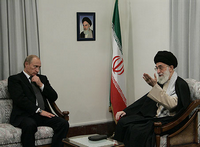On Feb. 2, Iran launched its first wholly indigenous satellite, the Omid, from a two- or possibly three-stage liquid-fuel Safir missile launcher. Assessments of the launch by European, Israeli, and American experts concurred that it raises the specter of Iran having a usable ballistic missile capability with which it can eventually launch the nuclear weapons that they and their governments fear Iran is building. Specifically, they believe that Iran can now target Europe with its missiles. Neither are they alone in the belief. Vitaly Lopota, president of Russia's Energiya Corporation, congratulated Iran for having missiles capable of reaching any spot on Earth. The Russian government and its pundits, though, either remained silent or said that the satellite launch did nothing to change their perception that Iran does not pose a missile threat. Even though Moscow claims to welcome the Obama Administration's initiative to engage in direct talks with Iran, it is unlikely to alter its public stance that Iran is neither building a nuclear weapon nor presenting a missile threat. Given all the evidence to the contrary, as well as Iran's proximity to Russia, Central Asia, and the Caucasus, we need to understand why Russia adopts this posture.
Russia and Iran’s Missiles

